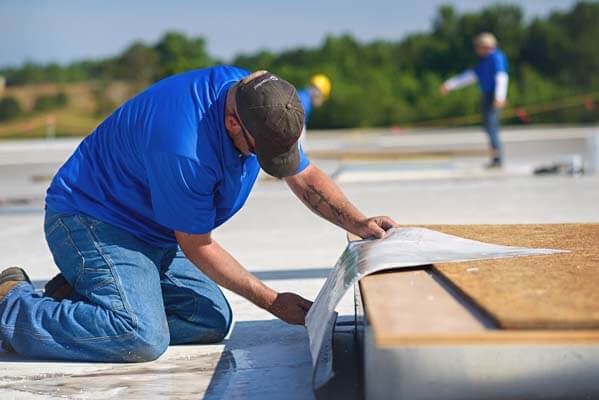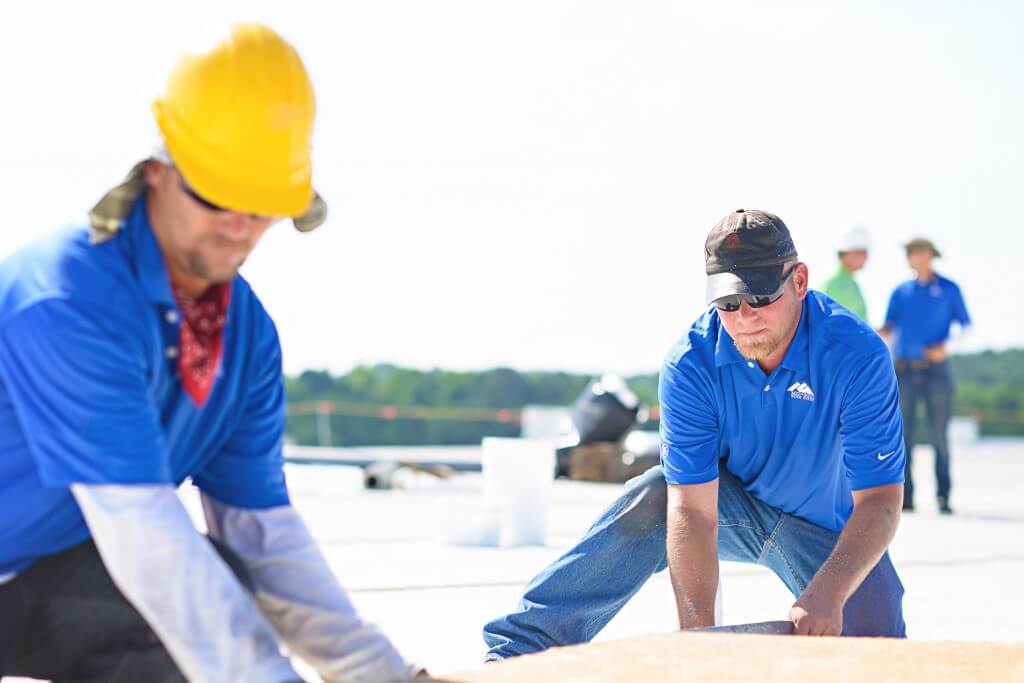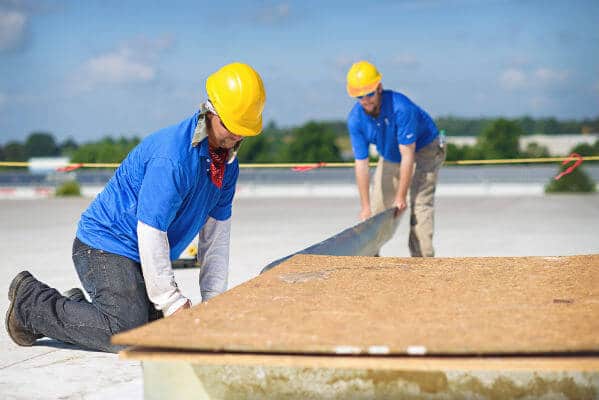Four Signs Your Roof Is Failing


Like anything in life, a roof is at risk of failing if it’s not given proper attention. A large roof needs to be inspected, treated and repaired on a regular basis if it’s to have a long life. There are many potential causes for a roof to fail prematurely if left untreated, but here are four of the most common ones.
Ponding water
All roofs – but particularly flats roofs – are at risk of being damaged by standing water, often referred to as “ponding water.” This often is a result of plugged drains or scuppers, damaged insulation or insufficient primary slope. It can also be caused by other equipment on the roof such as leaking heating systems or air conditioners putting enough water on the roof that it cannot evaporate fast enough. If ponded water remains on a roof for a long period of time with some kinds of roofs, particularly built-up asphalt roofs, it’s at risk of prematurely aging the surface and possibly ruining the insulation underneath. This is why it’s important to make sure drainage components, such as scuppers and drains, in place on a roof are properly cleaned and maintained.
Blisters
Blisters are bubble-like or long, thin raised areas on a roof. They occur when a gas, usually water vapor, is trapped underneath the surface. The heat of the sun during the day causes the gas to expand. The expansion of the gas creates a pressure that causes the bubbles to expand. Blistering happens frequently but is usually a minor problem as it rarely compromises the integrity of the roof system. However, blistering can lead to weakened membranes and can cause greater failures and leaks if neglected.
Splitting
Splitting refers to the cracks that form in a membrane or top ply of an asphalt roof due to a number of causes. This failure is common in aging roof systems. As the system ages, it stiffens and shrinkage could occur, depending on the system. This creates a situation where temperature change or impact load can overstress the membrane, causing further splits. While splitting often occurs on the surface, it opens the rest of the roof assembly up to moisture intrusion. Splits also make the roof less durable, putting the roof at risk of more water intrusion.
Punctures
Punctures are probably the most preventable type of failure. They happen as a result of carelessness on the part of people visiting the roof, such as heating and air conditioning system workers, painters, smokers or tenants. Punctures refer to damage in the form of holes or tears in the roof system, potentially caused by debris, trash or moving heavy objects across the roof. Unlike splitting, these failures range in size and visibility. Sometimes, a very small scrape can allow water into the system thru pin sized holes. Other times, damage can be so severe that it leaves large holes in the roof system. This allows for water and air intrusion under the roof system, which can become a serious problem. Quite simply, this type of damage can be avoided if the number of people with access to a roof is limited and those who do go on the roof understand the importance of being careful.
LIKE WHAT YOU JUST READ?
Sign up for our newsletter to get fresh articles, updates and more!
Assess, Report and Decide: Get to Know Your New Building’s Roof
If you’re considering buying a new building, the very first item on your list should be to get an assessment of the roof’s condition. This analysis can prevent surprises down the line and—if the roof needs work—it can have a dramatic effect on the price you wind up paying for the building.
Why You Need A Roofer Onsite When You Install Your HVAC System
It’s common to place the heating, ventilating and air conditioning (HVAC) systems for large buildings on the roof. A successful rooftop HVAC installation usually involves the collaboration of an entire team of workers, so that issues related to the roof, structures, electrical and HVAC can be discussed beforehand. If an HVAC system is not coordinated…


